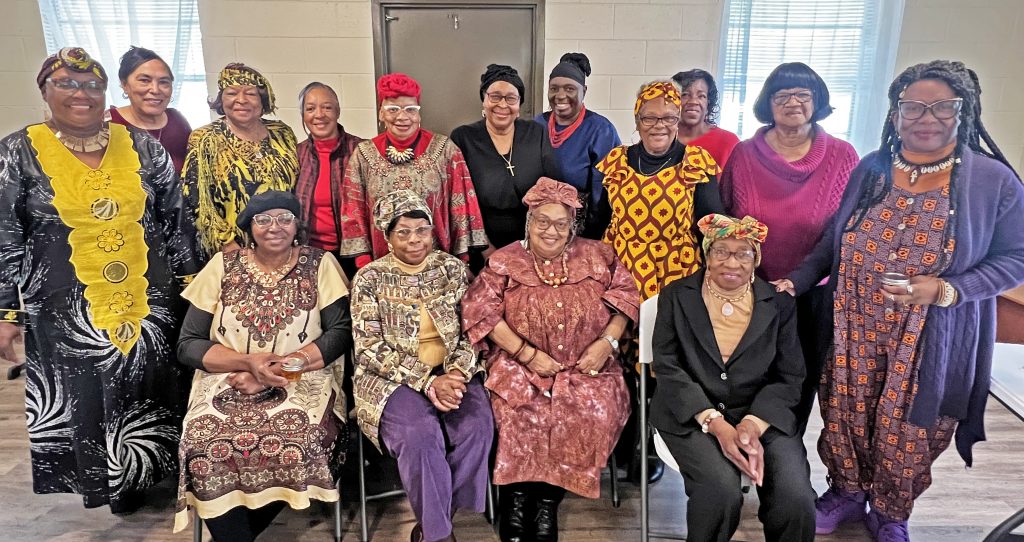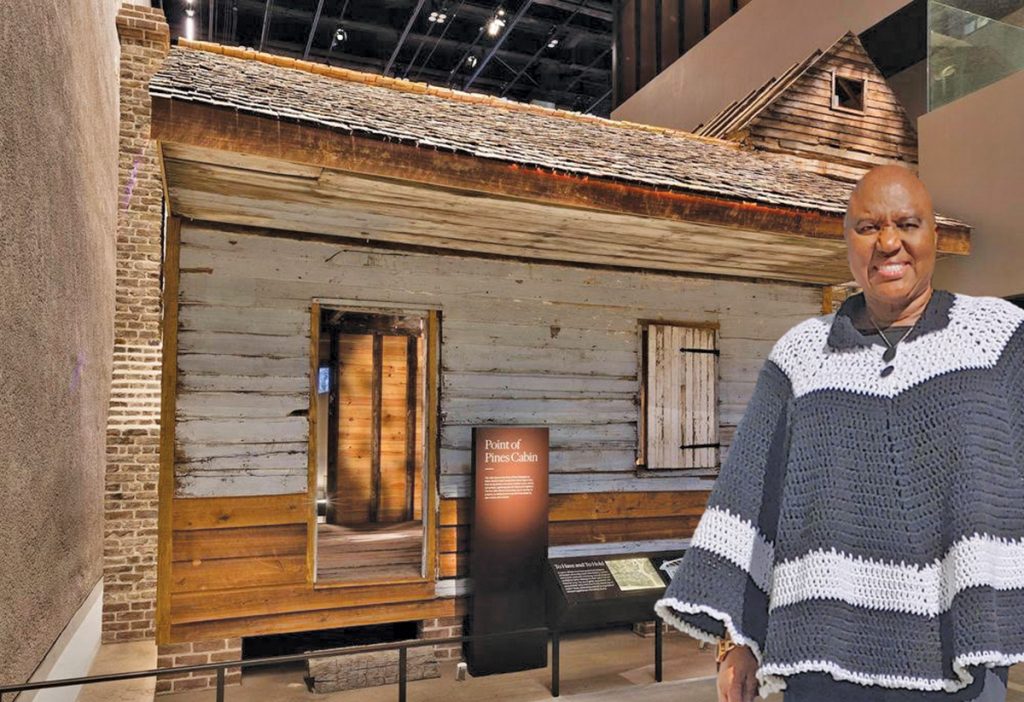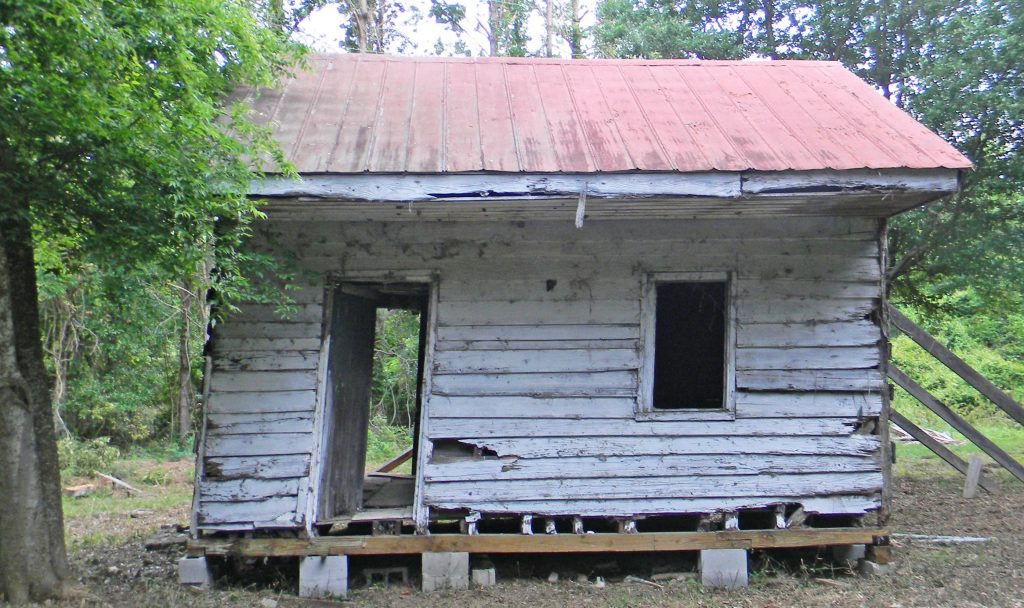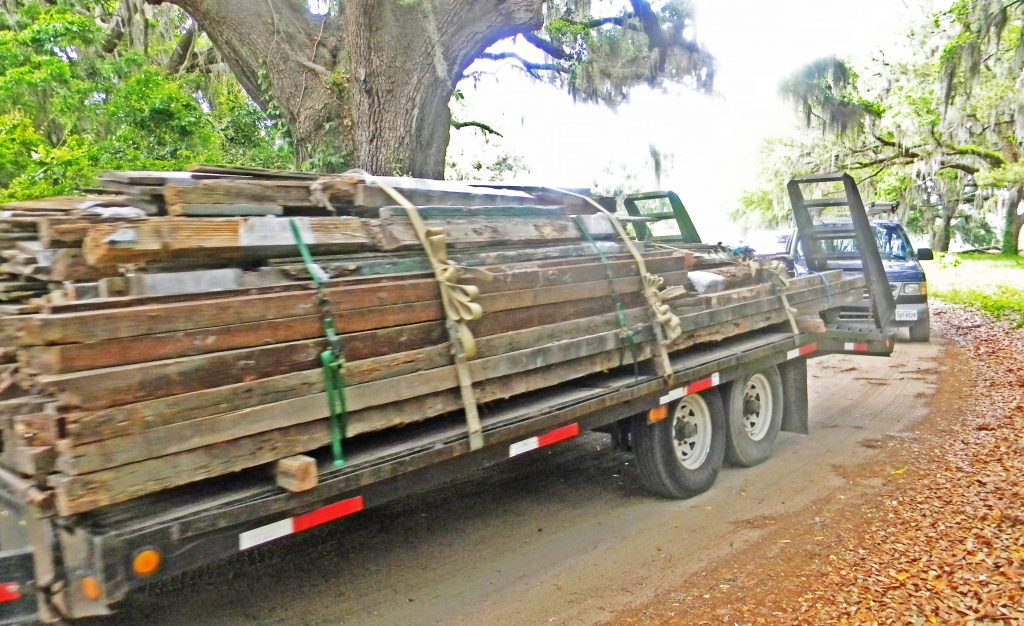
BLYTHEWOOD – The Blythewood Ladies Club hosted a Black History program during its regular monthly meeting at its club house on Sandfield Road on Friday. The program featured special guest Lavern Meggett, who lives in Blythewood’s Oak Hurst neighborhood, and her Great Aunt Isabella Meggett Lucas, age 94.
Meggett told two stories about how her family has been recognized separately – her mother’s side and her father’s side – and nationally for their connections and contributions to African- American history.
This week we are publishing the first story, of Meggett’s paternal grandparent’s home – a former slave cabin on Edisto Island that was lived in by the Meggett family for generations until 1981. After that, it was sold by the family who had owned it for years, disassembled, and moved to the Smithsonian National Museum of African American History and Culture (NMAAHC) where it has been on display ever since.
(The other story of how Meggett’s mother’s Gullah Geechee cookbook made it to the New York Times bestseller list will be published later this month.)

The cabin—home to the Meggett’s grandparents’ family and generations of Meggets before them—became vacant in 1981 when the last family member moved out. But the cabin saw new life a few years later as the centerpiece of the Smithsonian’s NMAAHC.
“It was my Grandmother’s house as I grew up. My grandfather died at an early age. The house had no electricity, no plumbing, no water and no bathroom,” Meggett said. “She and my grandfather had 11 children, including my father, and they all lived in the two rooms.
“There was a garden behind the house where they grew beans, okra and greens,” Meggett said. “They also had chickens and hogs for eggs and meat.
“All of us grandchildren, including me and my ten siblings, grew up nearby. We played, ate, and spent much of our time at that house when we were young. We loved it there. We didn’t have much – we played baseball with a stick for the bat and a can for the ball – but we had fun. We had lots of fun with each other at that house.”
“Slavery, Freedom and Grandma’s House,” a Smithsonian podcast, is the story of how Lavern Meggett’s grandparents’ tiny cabin became the crown jewel of the Smithsonian’s NMAAHC. Here is that story by Haleema Shah, host and associate producer for the Smithsonian’s “Sidedoor” podcast.
It turned out that the Meggett’s home had a documented history dating to 1853, something the family knew little about. Their grandmother’s home was originally built as a cabin for those who had been enslaved on Edisto Island.
“We call it the Point of Pines slave cabin because it came from the site known as the Point of Pines plantation,” says the museum’s Mary Elliott, who co-curated the inaugural exhibition “Slavery and Freedom.”
The small abode was accessioned into the Smithsonian because it conveys what Elliott describes as “the harsh reality” of America’s past. Not much larger than a two-car garage, the 16- by 20-foot cabin has one door, a loft space where anywhere from nine to 12 people slept, and a first floor where most of the daily tasks of living took place.
The cabin did not keep much out. Elliott says heat, wind and vermin all came through its loose boards.

Point of Pines Slave Cabin
When the cabin was first built, it sat on what was known as a “slave street,” where rows of meager dwellings sheltered the enslaved.
Slave street was home to the forced labor that worked under brutal conditions picking the sea island cotton—one of the most lucrative cash crops of the time—amassing huge amounts of wealth for the landowners who sold the crop to Northern cities and abroad. The long, silky fibers would often be woven into luxury fabrics that would clothe aristocrats and royals.
As the wealth of plantation owners grew, so did the need for labor. Between 1808 and 1860, the number of people enslaved on Edisto Island nearly quadrupled from 2,600 African-Americans to 10,000.
Much of the data and information on the enslaved comes from the records of plantation owners who documented their profits and the work enslaved people were forced to do. But the Point of Pines cabin tells a story that slaveholder ledgers never would—the human story.
“It’s the place where people who were enslaved had a chance to live their own lives. It’s where they were often free from control of the owner, and you see family life occurring,” says the museum’s founding director Lonnie Bunch. “You see families coming together over meals. You see people in the worst of situations bonding together because you’ve got eight people sleeping in a room.”
The cabins were a break from the brutality of plantation life, but not an escape from it.
“On the one hand, it’s this safe space. On the other hand, it’s also a space where so many horrible things happened—people were raped in these cabins. And because the cabin was not yours, you were reminded every day that there was somebody who had greater power than you,” Bunch says. “So, a cabin really allowed us to show the full range of the experience of being enslaved.”
Because the Point of Pines cabin was built before the civil war and was lived in long after, Curator Nancy Bercaw says that was part of the reason the museum focused on acquiring a cabin from Edisto Island. The low-lying islands off the South Carolina coast were some of the earliest territories to be taken over by Union troops and the people enslaved there became some of the first to declare themselves free.

The Promise of Freedom
Inside the museum, the cabin is positioned along a pathway that serves as the brink of two chapters—behind it the displays focus on slavery and before it is the promise of freedom.
After Emancipation, some people left the plantations that they had been enslaved on, moving towards cities, but many others stayed and became sharecroppers—which meant living in the same spaces they lived in while enslaved, continuing to live in poverty.
“What started to change, though, were the cabins. The formerly enslaved began to retrofit their cabins and make them their own. Elliott says that the family who lived in the Point of Pines cabin after Emancipation added an extra wall to break the cabin up into two sections. They even painted it—the outside was whitewashed and other parts were painted with blue “haint paint,” which was believed to ward off spirits.
But perhaps one of the most important changes to a cabin that was initially designed to contain people, was that a new door was added to it – “a concrete manifestation of freedom,” Bunch said.
For Bunch, the cabin represents resilience, just as much as it represents hardship.
The family who owned the cabin, sold it in 1981 to the Edisto Island Historic Society. In 2013, the Society donated the cabin to the Smithsonian in Washington, D.C.
The cabin was carefully taken apart plank-by-plank, piece-by-piece before Edisto Island’s community, staff from the Smithsonian, and members of the Meggett family. Reassembled now and on view at the museum, it is recognized as the crown jewel of the collection, providing a revealing glimpse into some of the most formative and troubling chapters in American history.











